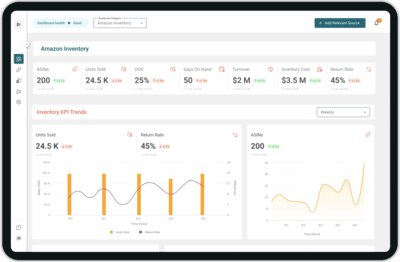Table of Contents
ToggleRetention rate refers to the percentage of individuals or customers/users/employees who remain engaged with a product, service, or organization over a given period. This metric is often used to measure the effectiveness of engagement and customer retention strategies and identify areas for improvement.
In different contexts, the definition of retention rate may vary slightly. For example, in the context of education, retention rate may refer to the percentage of students who return to a school or program after the first year. In the context of customer retention, it may refer to the percentage of customers who continue to make purchases or use a product or service after a certain period.
The retention rate is important because it is a key indicator of a company’s overall health and sustainability. High retention rates indicate that customers are satisfied with the product or service and are likely to continue using it, which leads to increased revenue and long-term growth. On the other hand, low retention rates may indicate that customers are not satisfied and are likely to leave, which can lead to decreased revenue and long-term decline.
How to Calculate Retention Rate
Depending on the context, the retention rate can be calculated thus:
- Customer retention rate: (Number of customers at the end of a period – Number of new customers during that period) / Number of customers at the beginning of that period * 100
- Employee retention rate: (Number of employees at the end of a period – Number of new hires during that period) / Number of employees at the beginning of that period * 100
- Member retention rate: (Number of members at the end of a period – Number of new members during that period) / Number of members at the beginning of that period * 100
Examples:
- An eCommerce brand had 1000 customers at the beginning of the year, and 100 new customers were acquired during the year. At the end of the year, the company had 900 customers who had been with the company for the entire year. The customer retention rate would be: (900- 100) / 1000 * 100 = 80%
- A company had 100 employees at the beginning of the year, and 20 employees left during the year. At the end of the year, the company had 80 employees who had been with the company for the entire year. The employee retention rate would be: (80 – 20) / 100 * 100 = 60%
- A gym had 100 members at the beginning of the year, and 10 new members joined during the year. At the end of the year, the gym had 90 members who had been with the gym for the entire year. The member retention rate would be: (90 – 10) / 100 * 100 = 80%
It is important to note that the retention rate can be calculated for any period (e.g., daily, weekly, monthly, etc.) depending on the context and the purpose of the analysis.
Factors that Affect Retention Rate
Depending on the context, different sets of factors affect the retention rate. A few examples are listed in the table below:
| Retention Type | Factors |
| Customer | Repeat purchase behavior, customer satisfaction, brand loyalty, perceived value, price, product quality, customer service, promotions, and discounts. |
| Student | Academic performance, engagement in extracurricular activities, satisfaction with the curriculum, quality of instruction, and campus facilities. |
| Employee | Job satisfaction, company culture, career development opportunities, compensation, benefits, and work-life balance. |
| Online Subscription | Relevance and usefulness of content, price, ease of use, and customer service. |
| Membership | Value and benefits of the membership, convenience, customer service, and sense of community or belonging. |
Importance of Retention Rate
Like above, the context determines the specific importance of tracking and improving retention rates, for e.g.:
| Type of Retention | Importance of Retention Rate |
| Customer | Repeat business, brand loyalty, word-of-mouth marketing |
| Student | Repeat enrollment, increased tuition revenue, positive reputation |
| Employee | Reduced hiring and training costs, improved productivity and morale |
| Online Subscription | Recurring revenue, predictable cash flow |
| Membership | Recurring revenue, predictability in membership fees, stability in organizational funding. |
Strategies to Improve Retention Rate
Few strategies to improve the retention rate in terms of customer retention, student retention, employee retention, online and physical subscriptions:
| Retention Type | Strategies to Improve Retention Rate |
| Customer | 1. Personalize communication and offers
2. Implement loyalty programs 3. Provide excellent customer service 4. Solicit feedback and act on it |
| Student | 1. Provide an engaging and relevant curriculum
2. Foster a sense of community 3. Offer personalized support and resources 4. Continuously assess and improve the student experience |
| Employee | 1. Encourage open and transparent communication
2. Offer opportunities for growth and development 3. Recognize and reward good performance 4. Foster a positive work-life balance |
| Online Subscription | 1. Continuously improve and update the service
2. Offer a free trial or discounted subscription 3. Send personalized and relevant content and offers 4. Provide excellent customer support |
| Membership | 1. Offer exclusive perks and benefits
2. Create a sense of community among members 3. Regularly communicate updates and events 4. Continuously improve the member experience |
Retention Rate vs Acquisition Rate
Retention rate and acquisition rate are two important metrics used to measure the performance of a business or organization.
Retention rate is the percentage of customers or clients who continue to do business with a company over a specific period. This metric is important because it helps businesses understand how well they retain customers and identify improvement areas.
On the other hand, the acquisition rate is the percentage of new customers or clients that a business can acquire over a specific period. This metric is important because it helps businesses understand how well they attract new customers and identify areas for improvement.
Both retention and acquisition rates are important for a business’s growth and success. A high retention rate indicates that a business has a loyal customer base, while a high acquisition rate indicates that a business is effectively attracting new customers.
Also, read:
Retention Rate vs Turnover Rate
Retention rate is a metric that measures the percentage of employees who remain with a company over a certain period.
The formula for retention rate is:
Retention Rate = (Number of Employees at the End of the Period – Number of New Hires during the Period) / Number of Employees at the Beginning of the Period
Turnover rate, on the other hand, is a metric that measures the rate at which employees leave a company over a certain period of time.
The formula for turnover rate is:
Turnover Rate = (Number of Employees who Left the Company during the Period) / Average Number of Employees during the Period
Retention rate and turnover rate are related but opposite metrics. A high retention rate means that a company has a low turnover rate and vice versa. A company with a high retention rate is likely to have a stable workforce and lower recruitment and training costs, while a company with a high turnover rate may have trouble retaining skilled employees and may incur higher costs associated with recruiting and training new employees.
Retention Rate vs Churn Rate
Retention rate is a metric that measures the percentage of customers or members who remain active and engaged with a company or organization over a given period. It is typically expressed as a percentage and is calculated by dividing the number of customers or members at the end of a period by the number of customers or members at the beginning of that period and then multiplying by 100.
Churn rate, also known as attrition rate, is the opposite of retention rate. It measures the percentage of customers or members who leave or stop using a company’s products or services over a given period of time. Like retention rate, it is typically expressed as a percentage and is calculated by dividing the number of customers or members who have left by the total number of customers or members at the beginning of the period, and then multiplying by 100.
The formula for retention rate is: Retention Rate = (Number of Customers at the end of the period / Number of Customers at the beginning of the period) x 100
The formula for churn rate is: Churn Rate = (Number of customers who have left / Number of customers at the beginning of the period) x 100
Business should look to maximize retention or minimize churn.
Conclusion
In conclusion, retention rate is an important metric for businesses as it is a key indicator of customer satisfaction and loyalty. However, it is just one part of the larger picture of understanding your customers. To truly gain insight into your customer base, it’s essential to have a robust data platform that can provide a comprehensive view.
That’s where Saras Analytics comes in, as we can help you to gather and analyze the data you need to make informed decisions about your business. Contact us today if you’re ready to take your customer analytics to the next level.
















